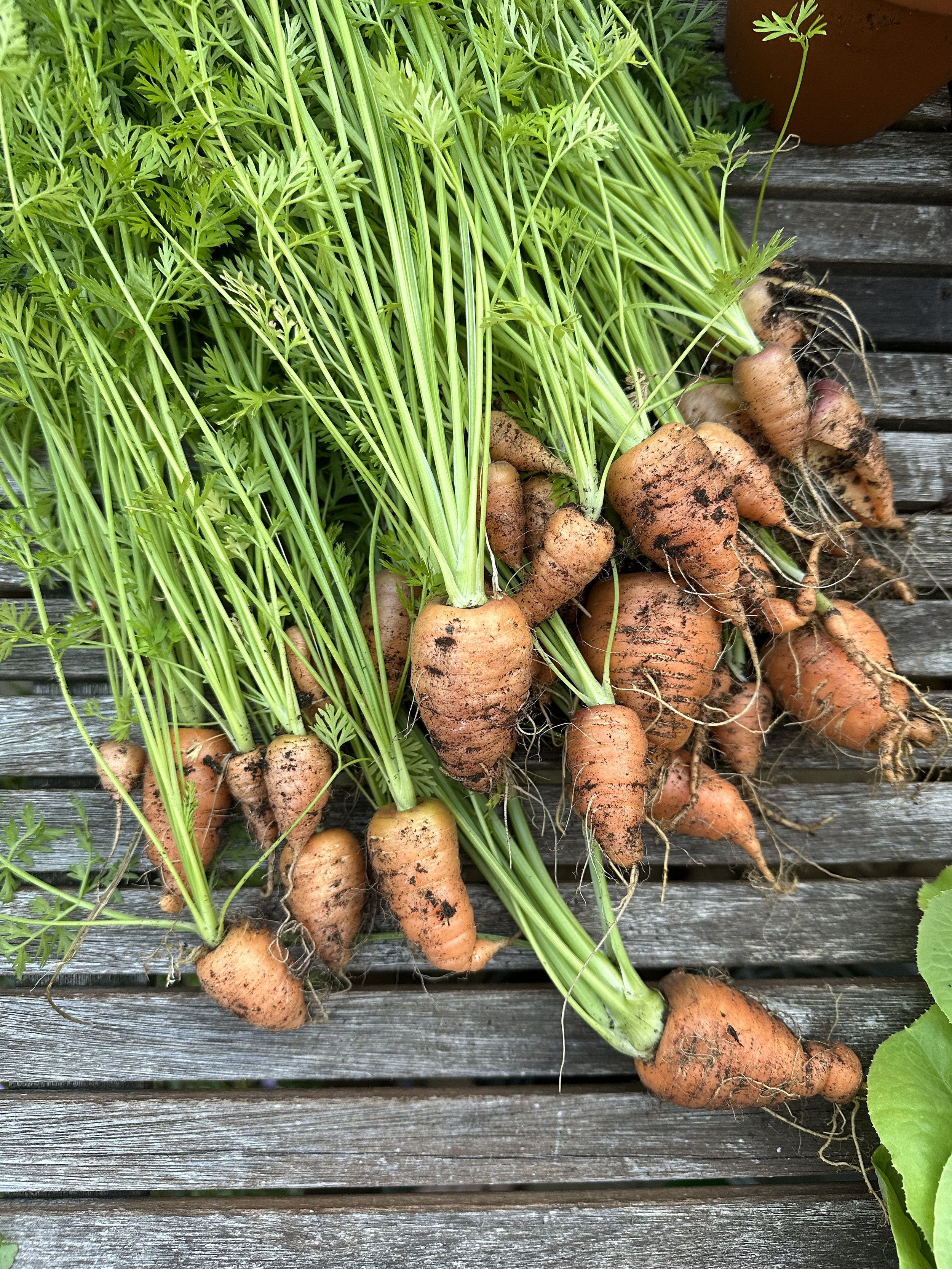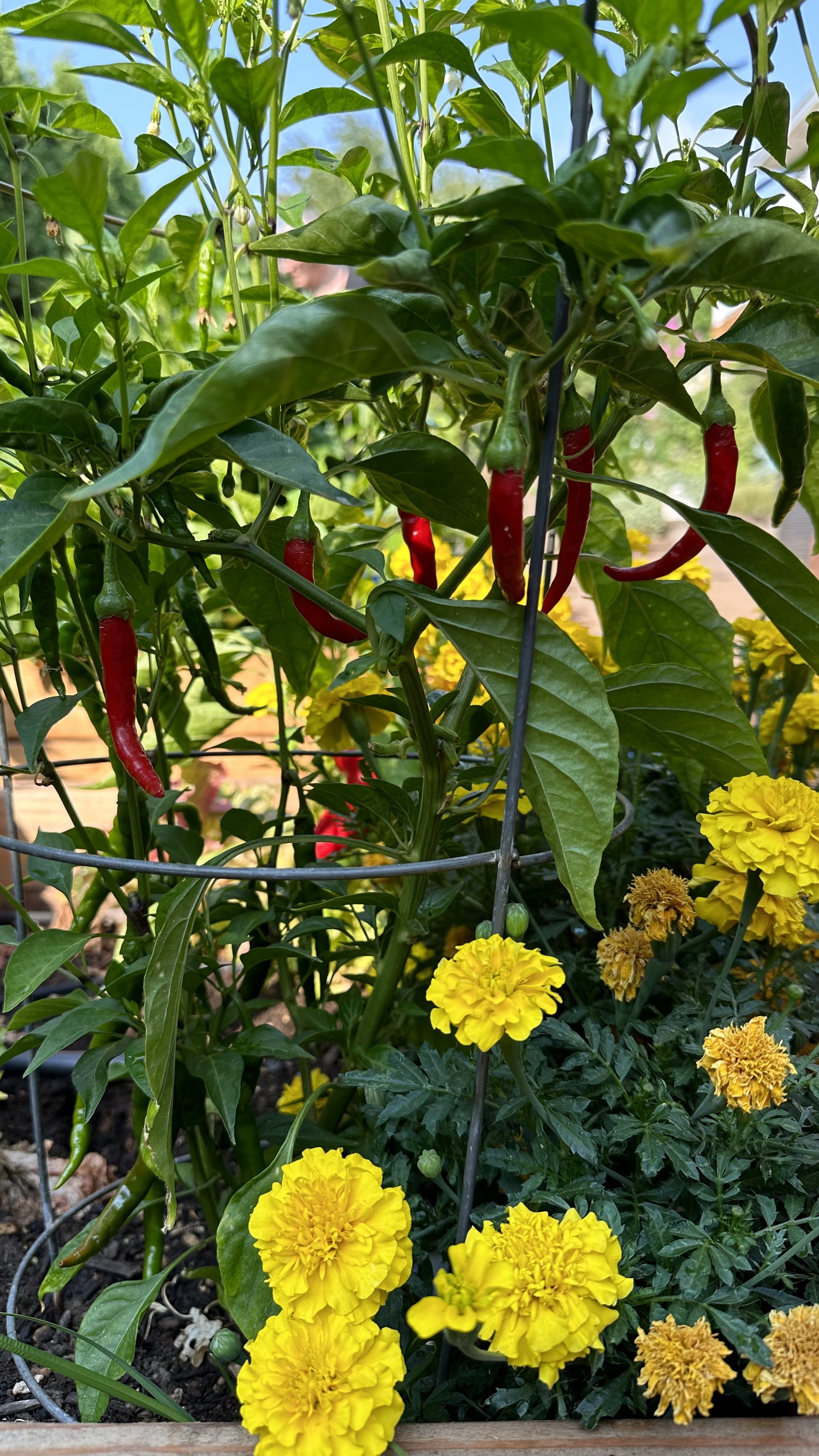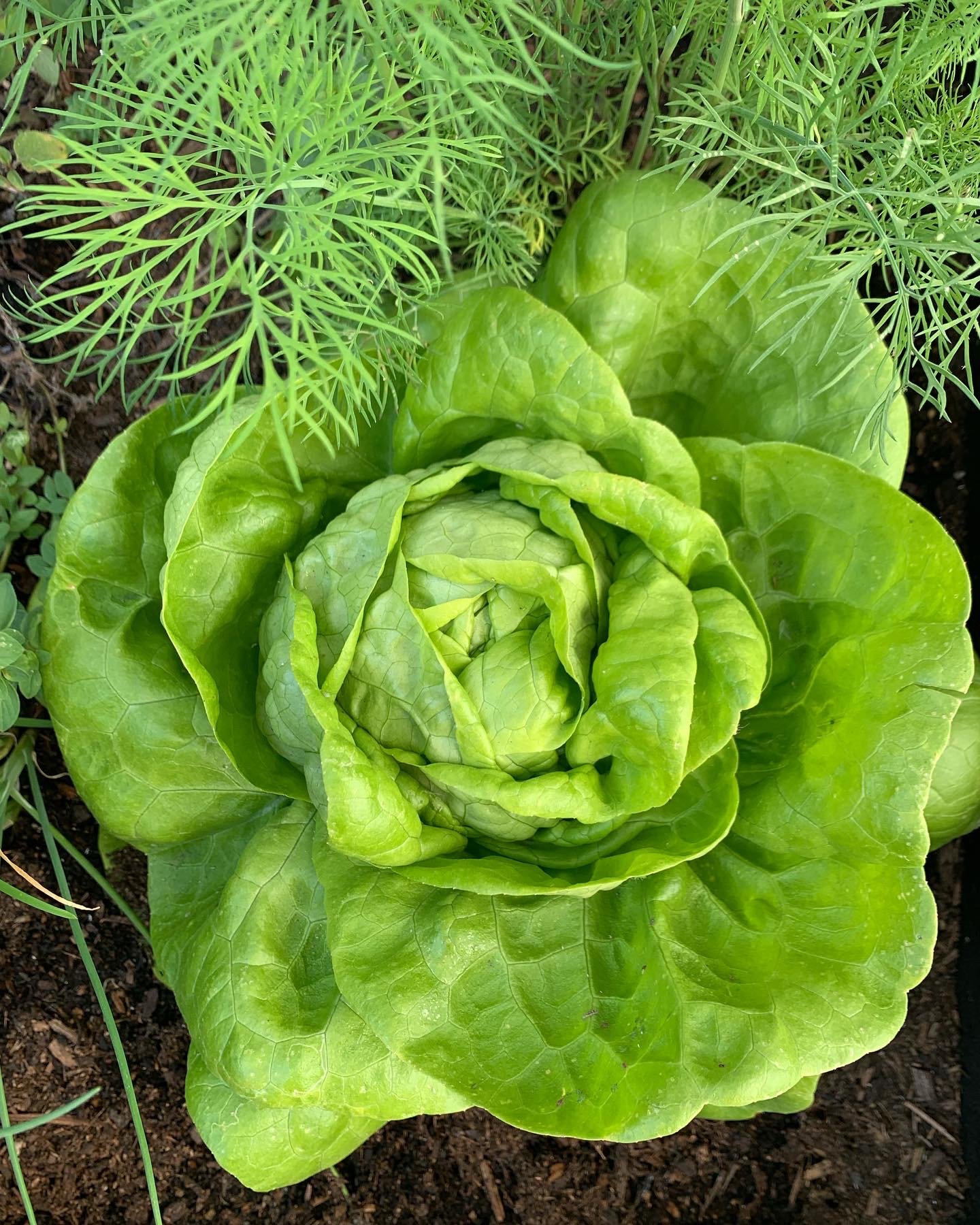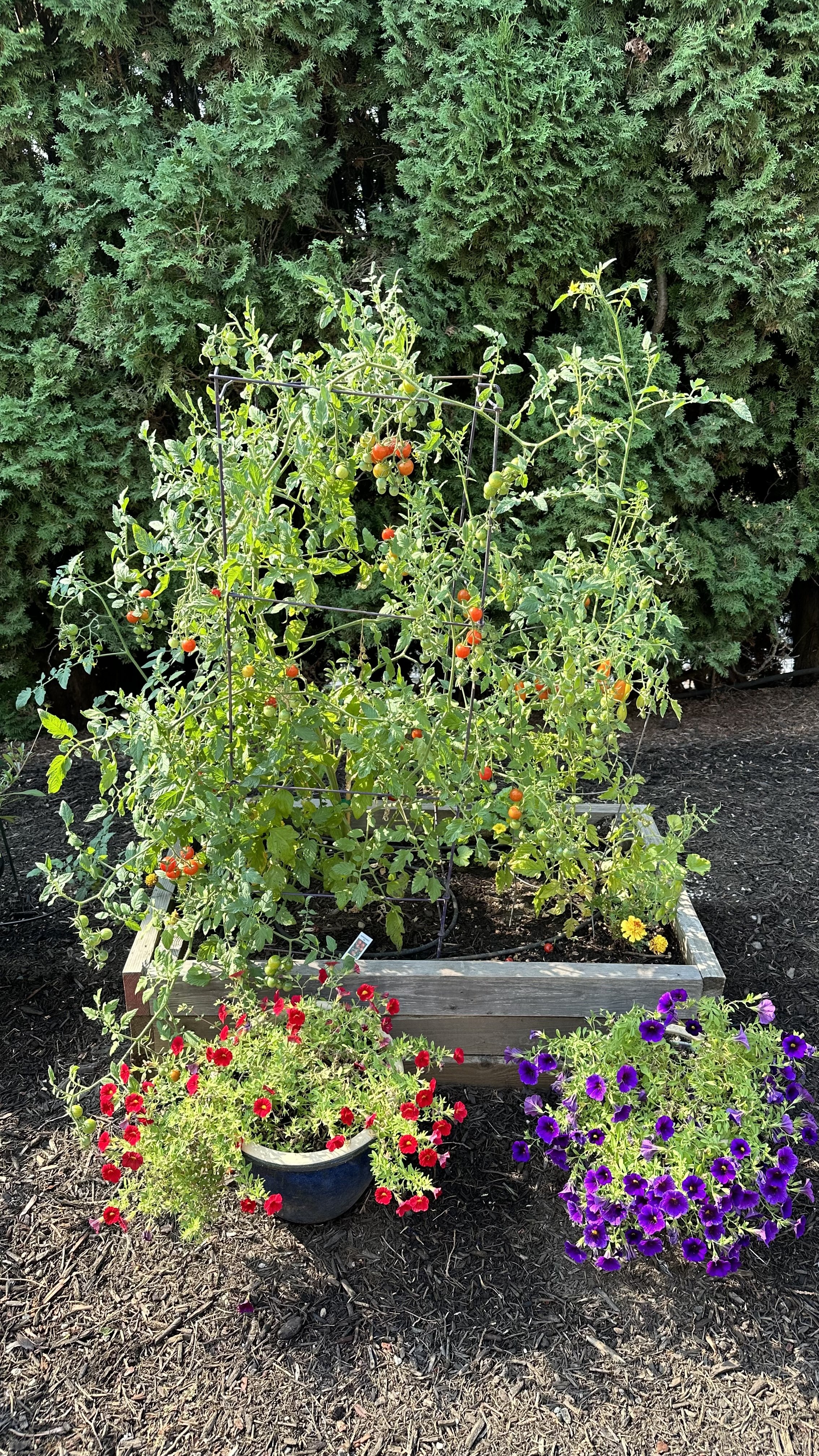The Best Vegetables to Grow in a Raised Bed from Seed
This website is reader-supported - thank you! This post may contain affiliate links. As an Amazon Associate, I earn from qualifying purchases at no extra cost to you.
Raised garden beds have transformed gardening landscapes, seamlessly merging form with function.
Rising above traditional ground-level plots, these elevated havens bring forth a bouquet of benefits tailored to both green-thumbed veterans and budding gardeners.
Whether navigating the spatial challenges of urban living or optimizing a spacious suburban backyard, raised beds infuse efficiency and productivity into every garden.
This guide dives into advantages of raised bed gardening.
Join me as we delve deep into the raised garden realm, spotlighting the ideal vegetables to cultivate from seed and unveiling strategies to ensure every season is fruitful.
To learn more about growing in raised beds, check out my guides:
Beautiful raised garden beds in my Mom’s garden in Oregon built by my brother.
5 Best Vegetables to Grow in a Raised Bed from Seed
Raised garden beds offer a unique environment for germinating seeds.
Their superior drainage, enhanced soil quality, and warmth are key factors that favor direct sowing.
Here are the vegetables that truly thrive in raised bed conditions:
SpinacH:
Raised bed soil, rich in nutrients and well-aerated, supports the quick growth of leafy greens.
The best spinach varieties are 'Bloomsdale Long Standing' and 'Baby's Leaf Hybrid'.
Here are the ‘Bloomsdale Long Standing’ spinach seeds I recommend:
Here are the 'Baby's Leaf Hybrid' spinach seeds I recommend:
Kale:
The best kale varieties are 'Dwarf Blue Curled Vates' and 'Lacinato' (also known as Dinosaur Kale).
Here are the ‘Dwarf Blue Curled Vates’ kale seeds I recommend:
Here is the ‘Lacinato’ or ‘Dinosaur’ kale I recommend growing:
Lettuce:
The best lettuce varieties are 'Black Seeded Simpson', 'Parris Island Cos Romaine', and 'Buttercrunch'.
Here are the ‘Black Seeded Simpson’ seeds I recommend:
Here are the ‘Parris Island Cos Romaine’ seeds I recommend:
Here are the ‘Buttercrunch’ lettuce seeds I recommend planting:
Planting Tips:
Employ succession planting by sowing seeds every two weeks.
Use shade cloth in hotter months to prevent bolting.
To learn more about growing lettuce, check out my guide Growing Romaine Lettuce: A Complete Guide.
For more growing tips, check out my guides:
Carrots:
The unobstructed, rock-free environment of raised beds lets root vegetables grow deeply and uniformly.
The best carrots to grow in raised beds are 'Nantes', 'Danvers 126', and 'Imperator 58'.
To learn more about growing carrots, check out my guide on how to grow carrots in containers.
Here are the ‘Nantes’ carrot seeds I recommend:
Here are the ‘Danvers’ carrot seeds I recommend:
For more tips, check out my guide:
Beets:
The best varieties of beets to grow are 'Detroit Dark Red', 'Golden', and 'Chioggia' and they offer a mix of colors and flavors.
To learn more about growing beets, check out my guide on when to harvest beets.
Here are the ‘Detroit Dark Red’ beet seeds I recommend growing:
Here are the ‘Golden’ beet seeds I recommend:
Planting Tips:
Adequate spacing is key.
Maintain even moisture levels to reduce the risk of cracking or splitting.
For more planting tips, check out my guide:
My recent green bean harvest, grown in a raised bed.
Bush Beans:
As legumes, beans enrich soil with nitrogen, beneficial for subsequent crops in rotation.
The best bean varieties to grow in raised beds are 'Blue Lake', 'Contender', and 'Provider'.
Here are the ‘Blue Lake’ bean seeds I recommend:
Here are the ‘Contender’ bean seeds I recommend:
Here are the ‘Provider’ bean seeds I recommend:
For more tips, check out my guide:
Pole Beans:
The best pole bean varieties to grow from seed by far are the 'Kentucky Blue', 'Scarlet Runner', and 'Rattlesnake'.
These three are are popular for both their productivity and taste.
Here are the ‘Kentucky Blue’ bean seeds I recommend:
Here are the ‘Scarlet Runner’ bean seeds I recommend:
Here are the ‘Pole Bean’ seeds I recommend:
Planting Tips:
After a season of beans, consider rotating with crops that will benefit from the added nitrogen.
My most recent crop of heirloom tomatoes.
Tomatoes:
Direct sowing offers a wider variety choice and promotes a resilient root system.
I recommend 'Brandywine' for beefsteak tomatoes, 'Roma' for paste tomatoes, and 'Sungold' for cherry tomatoes.
To learn more about growing tomatoes, check out my guides Planting Tomatoes in Raised Beds and Are Coffee Grounds Good for Tomato Plants?
Here are the ‘Brandywine’ tomatoes I recommend:
Here are the ‘Sungold’ tomatoes I recommend:
Planting Tips:
Wait for soil temperatures above 60°F. Offer support with cages or stakes. Maintain consistent moisture.
Check out my guides to The Art of Harvesting Tomatoes: When and How to Pick the Perfect Fruit and When to Start Tomato Seeds Indoors.
Bell Peppers:
Peppers, particularly when started early, thrive in the warm soil conditions of raised beds.
I recommend 'California Wonder' and 'Purple Beauty'.
Here are the ‘California Wonder’ tomatoes I recommend:
Here are the ‘Purple Beauty’ peppers I recommend growing:
Hot Peppers:
My favorite are 'Jalapeño', 'Habanero', and 'Cayenne'.
Here are the 'Jalapeño’ seeds I recommend:
Here are the ‘Habanero’ seeds I recommend:
Planting Tips:
Companion planting with flowers or herbs can be beneficial in deterring pests naturally.
Check out my guide to The Art of Preserving Heat: How to Dry Chillies Perfectly.
Vegetalbes to Think Twice About in Raised Beds
While raised beds offer numerous advantages for many vegetables, there are certain plants that might not be the best fit.
Here are some vegetables and reasons to reconsider before planting them in raised beds:
Large Vining Plants:
Examples:
Pumpkins, some varieties of winter squash, and watermelons.
Reason:
These plants have extensive vines that can sprawl several feet in all directions, quickly overwhelming a raised bed and potentially shading out other plants.
Perennial Vegetables:
Examples:
Asparagus and artichokes.
Reason:
These plants can live and produce for many years. While they can be grown in raised beds, they'll claim their space for a long time, limiting your ability to rotate crops and manage soil health effectively.
Sweet Corn:
Reason:
Corn plants are wind-pollinated and are typically planted in blocks to ensure good pollination.
In a small raised bed, there might not be sufficient space to grow a large enough block of corn plants for effective pollination.
Plants with Specific Soil Needs:
Examples:
Blueberries (which prefer highly acidic soil).
Reason:
If your raised bed is filled with general-purpose vegetable garden soil, it might not be suitable for plants with specialized soil requirements (like blueberries) unless you're willing to adjust the soil's composition just for them.
Here is the raised garden bed I recommend:
Why Choose Raised Garden Beds?
Raised garden beds have steadily gained traction among both novice and experienced gardeners.
Their structure and design offer a multitude of advantages that can optimize the growing conditions for many plants, especially vegetables.
Let's explore these benefits in detail:
Superior Soil Quality:
Customization:
One of the top perks of using raised beds is the ability to customize your soil blend.
Whether you need a sandier soil for root vegetables or a richer compost-heavy mix for leafy greens, raised beds allow you to tailor the soil to your plants' exact needs.
Check out my guide to The Best Compost for Vegetable Gardens.
Reduced Soil Compaction:
Traditional garden plots can suffer from soil compaction due to foot traffic and machinery.
In raised beds, the soil remains loose and airy, promoting better root growth and easier plant establishment.
Enhanced Drainage:
Raised beds provide better drainage compared to in-ground gardens.
This is particularly beneficial for plants that are susceptible to root rot or fungal diseases which thrive in waterlogged conditions.
Raised bed are also great in regions with heavy rainfall, ensuring that excess water doesn't stay stagnant around plant roots.
Extended Growing Season:
The soil in raised beds warms up faster in the spring compared to ground-level plots.
This can jumpstart the growing season, allowing gardeners to sow seeds or transplant seedlings earlier.
Similarly, in the fall, raised beds can retain warmth a bit longer, potentially extending the harvest period for certain crops.
Ergonomic Benefits:
Raised beds are easier on the back and joints.
Gardeners can tend to their plants without having to bend over excessively or kneel on the ground. This is especially advantageous for older gardeners or those with physical limitations.
Additionally, it makes tasks like weeding, planting, and harvesting more comfortable and efficient.
Natural Pest Control:
Some garden pests, like certain soil-borne diseases and crawling insects, can be deterred by the elevation of raised beds.
The defined borders of raised beds can also make it easier to install protective barriers, such as chicken wire against rabbits or netting against birds.
Versatility and Aesthetic Appeal:
Raised garden beds can be a focal point in landscape design.
Whether made from wood, stone, or metal, they can be both functional and aesthetically pleasing, adding structure and form to garden spaces.
Their modular nature allows for flexibility in garden design. Gardeners can experiment with different layouts, heights, and shapes to suit their space and gardening goals.
Tips for Sowing and Growing in Raised Beds
Raised bed gardening offers an optimized environment for plant growth, but to make the most of it, understanding the nuances of sowing and cultivation is essential.
Here are some detailed guidelines to ensure a successful harvest:
Soil Preparation:
Compost and Soil Mix:
Before planting, enrich the soil with a mix of compost and well-draining soil.
This not only provides nutrients but also ensures the soil remains aerated.
Check out my guide to the best compost for vegetable gardens.
Soil pH:
Different plants have varying pH requirements.
Most vegetables prefer a slightly acidic to neutral pH (6.0 to 7.5). Use a soil testing kit to check and adjust the pH accordingly.
Here is the soil pH tester I recommend.
When to Sow Seeds:
Warmth:
Raised beds warm up faster than ground-level plots, allowing for earlier planting.
But always ensure the soil temperature matches the requirements of the seeds you’re planting.
Frost Dates:
Be aware of the last expected frost date in spring and the first expected frost date in fall.
Some plants, like tomatoes and peppers, are sensitive to frost, while others, like spinach and kale, can handle a little cold.
Spacing and Depth:
Respect Spacing:
Overcrowding can stress plants and reduce yield. Ensure that you're giving your plants enough space as per their growth habit.
Planting Depth:
Seeds planted too deep might not germinate. Follow seed packet instructions for optimal depth.
Watering Techniques:
Consistency:
Raised beds can dry out faster. It's crucial to maintain consistent moisture levels, especially during seed germination and the establishment of seedlings.
For more watering tips, check out my guide How Often to Water Seedlings.
Drip Irrigation:
Consider installing drip irrigation or soaker hoses. These systems deliver water directly to the soil, reducing evaporation and minimizing water waste.
Mulching:
Retain Moisture:
Mulch, whether organic (like straw or wood chips) or inorganic (like woven fabric), can help conserve soil moisture, suppress weeds, and regulate soil temperature.
Check out my guide: The Best Alternatives to Traditional Mulch for Your Garden.
Weed Control:
A layer of mulch can also deter weed growth, ensuring your plants don’t have to compete for nutrients.
Succession Planting:
Continuous Harvest:
To maximize the yield from your raised bed, consider succession planting.
As soon as one crop is harvested, plant another. This ensures a continuous supply of fresh vegetables.
Learn more with my guide: What is Succession Planting? Grow More in Less Space.
Companion Planting:
Natural Pest Deterrent:
Certain plants, when grown together, can deter pests or enhance each other's growth. For example, planting basil alongside tomatoes can repel tomato hornworms.
To learn more, check out my guide The Best Basil Companion Plants.
Beneficial Combinations:
Marigolds can deter nematodes, and nasturtiums can ward off aphids.
Pest and Disease Management:
Regular Monitoring:
Check plants regularly for signs of pests or diseases. Early detection can make treatment more effective.
Natural Solutions:
Favor natural or organic solutions, like neem oil or insecticidal soap, to treat pests.
Design and Layout Tips for Raised Beds
Crafting an optimal layout for your raised bed garden can dramatically enhance productivity, especially when space is at a premium.
Let's delve into strategies that optimize every corner of your raised garden bed:
Vertical Gardening:
Square Foot Gardening:
Advantages: By segmenting the garden into square-foot sections, you create an organized and efficient planting system, making the most of the loose soil in raised beds.
How-To: Design based on a plant's mature size. For example, one square foot could accommodate one broccoli plant or four lettuce plants.
Row Planting with a Twist:
Advantages: Adapting traditional row planting to raised beds by reducing the row width can help in maximizing the draining soil benefits.
How-To: Implement staggered rows, ensuring plants have ample space for growth without overcrowding their neighbors.
Companion Planting:
Advantages: Certain plants, when grown in proximity, can be mutually beneficial, either by warding off pests or by enhancing each other's growth.
Examples: Tomatoes (which can start as seeds indoors) paired with basil, carrots, alongside onions and corn interplanted with beans are time-tested companion duos.
Tiered or Multi-level Beds:
Advantages: Tiered designs add depth, making the most of the vertical space and the well-draining soil properties.
How-To: Construct raised beds in step-like tiers, each potentially accommodating a different set of crops.
Incorporating Containers:
Advantages: Containers can complement a raised bed garden, especially for plants requiring unique soil conditions.
How-To: Integrate containers either adjacent to or even within larger raised beds. This strategy works well for plants like blueberries that thrive in acidic soil.
Pathways and Accessibility:
Advantages: Thoughtfully designed pathways guarantee that each part of the garden remains accessible, ensuring the loose soil isn’t compacted.
How-To: Organize your beds with defined, narrow pathways in between. Employ stepping stones or mulch to demarcate these paths.
Raised bed in my Mom’s garden in Oregon growing delicious cherry tomatoes.
FAQs
What are some easy vegetables to grow in raised beds?
While many vegetables thrive in raised beds, some particularly beginner-friendly choices include radishes, lettuce, bush beans, and kale.
These plants are generally low-maintenance, have shorter growing seasons, or are less prone to common garden pests.
Can I grow fruits in my raised garden bed?
Absolutely! While vegetables are common, many fruits thrive in raised beds too.
Strawberries are a favorite due to their spreading habit, but you can also grow dwarf varieties of blueberries, raspberries, and even some types of dwarf fruit trees.
How do I decide the best vegetables for a small raised bed?
For limited space, opt for vegetables that have a compact growth habit or can be grown vertically.
Examples include leafy greens, dwarf or determinate tomato varieties, and climbing plants like beans or cucumbers that can be trellised upwards.
Are there any all year-round plants for raised beds?
Several plants can be grown year-round, especially in milder climates.
Perennial herbs such as rosemary, thyme, and chives are good choices (Check out my guide to Herbs That Can Be Planted Together: The Best Combinations).
In cooler seasons, plants like kale, collards, and brussels sprouts can withstand frosty conditions.
Which vegetables need the most sun?
Most fruiting vegetables require ample sunlight to produce a good yield.
Tomatoes, peppers, cucumbers, and squash typically need at least 6-8 hours of full sun daily.
Root vegetables like carrots or beets can tolerate a bit more shade but will also thrive with plenty of sun.
How deep should my raised bed be?
The ideal depth depends on what you're planting. For most vegetables, a depth of 6-12 inches is sufficient.
However, for deep-rooted vegetables like carrots or potatoes, or if your native soil is hard and impenetrable, aiming for 12-18 inches is better.
Do raised beds require special soil?
Raised beds benefit from a well-draining, nutrient-rich soil mix.
While you don't necessarily need "special" soil, a mix of topsoil, compost, and other organic matter can create an ideal environment for plant growth.
Check out my guide to The Best Compost for Vegetable Gardens.
How often should I water my raised bed garden?
Raised beds may require more frequent watering as they can dry out faster than in-ground vegetable gardens.
It's essential to keep the soil consistently moist but not waterlogged.
Checking the soil's moisture an inch below the surface can help guide your watering routine.
Soaker hoses are a great investment to ensure your raised beds stay consistently watered.
Raised bed gardening offers a practical solution for urban and suburban spaces alike, blending convenience with enhanced productivity.
By making informed decisions, from choosing the right seeds to planning the optimal layout, every gardener can tap into the benefits of these elevated plots.
They're more than just a trend; they're a testament to innovative gardening.
Whether you're just dipping your toes into gardening or have years of experience under your belt, raised beds provide the tools and environment to elevate your green thumb journey.
Pin this post to save it for later!
































































